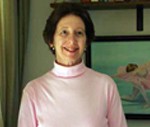Life Along the Silk Road, by Susan Whitfield, 2nd edition, University Press, 2015
By Sheila Orysiek

SAN DIEGO — The book opens with several explanatory sections: a “Preface to the Second Edition,” a “Note of Transliteration and Names,” an “Introduction,” a “Prologue,” and a map spread across two pages.
The map is arresting. It shows the major trading routes, land and sea in the first millennia CE, from Europe across the most remote mountains and deserts of the Asian landmass to China and then beyond to Japan and Korea. It is amazing to think of so much distance covered and trade done from the backs of pack animals and small boats propelled by sail and oar.
Whitfield proposes to tell the tale of what life was like at that time and in the various places along those trading routes through the eyes and perspectives of twelve fictional people: shipmaster, merchant, soldier, horseman, princess, courtesan, pilgrim, writer, official, nun, widow and artist.
The book is steeped in facts, from description of the extremes of heat and cold, deserts of cinder-gravel rock to the highest mountains and passes on the planet as well as the cultures, customs and minutia of everyday life. At times the amount of minutia presented overtakes the description of the grandeur of the scenes along the route.
Across the centuries, the one constant is the endless battling for control of trade and other resources. Eventually for the reader it becomes a dizzying smear of turbulence, power seesawing between ancient enemies sometimes defined by religion, but mostly mindless pushing and shoving of hordes of people. Buddhists, Hindus, Jews, Zoroastrians, Christians and others fight amongst themselves and one another. Then come larger sweeps of armies from Mongolia, China and lastly a new contestant – Islam – seeking not simply control of trade but of establishing empire.
There is no doubt that the author is an authority on the subject – even so vast a subject as this. However, the method she has chosen to relay this information – in the form of twelve fictional characters and stories – is awkward. Fiction and non-fiction are not easily melded; each may use the same orchestra (language) but the music produced is different.
As Whitfield states in the “Preface to the Second Edition” and elsewhere, her aim is to make the scholarly material more accessible; which is certainly a worthy intention. However, I think someone who would pick up this book based on its title, doesn’t need the draw of fictional characters and stories.
*
Orysiek is a freelance writer who specializes in arts and literature. The author may be contacted via sheila.orysiek@sdjewishworld.com. Comments intended for publication in the space below must be accompanied by the letter writer’s first and last name and by his/ her city and state of residence (city and country for those outside the U.S.)